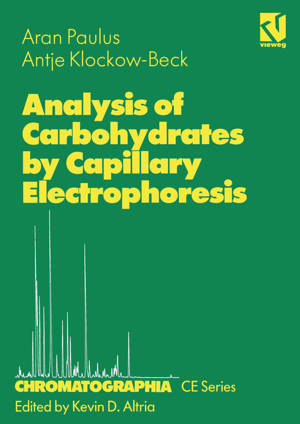
- Afhalen na 1 uur in een winkel met voorraad
- Gratis thuislevering in België vanaf € 30
- Ruim aanbod met 7 miljoen producten
- Afhalen na 1 uur in een winkel met voorraad
- Gratis thuislevering in België vanaf € 30
- Ruim aanbod met 7 miljoen producten
Zoeken
€ 52,95
+ 105 punten
Omschrijving
Carbohydrates are ubiquitous. They come as monomers, oligomers and polymers with a startling variety of chemical, physical and material properties. They affect almost every as- pect of human live. For example they are an essential part of our nutrition. Cellulose, a car- bohydrate polymer, acts as a central material in civilization: as building material for housing and as paper for written communication. Scientifically, the interest in carbohydrates ranges from structural elucidation of simple carbohydrates to fundamental biochemical processes such as photosynthesis and glycolysis. Always, a deeper understanding of a particular aspect of carbohydrate chemistry was accompanied by new methods of measuring and characteri- zing this class of molecules. During the last decades a better understanding of the roles of carbohydrates in biochemi- cal pathways developed. It turned out, that carbohydrates attached to proteins in glycoprote- ins are involved in a number of molecular recognition and targeting processes. This lead to a new research field: Glycobiology. However, unlike for proteins or nucleic acids, there is at this time no consistent theory how chemical composition and structure controls function and inherent information. In order to develop the database, on which new theories and scientific hypothesis are founded, analytical methods to separate compounds with an enormous struc- tural diversity and only minor differences in chemical or physical properties has to be deve- loped, preferably using only minute quantities.
Specificaties
Betrokkenen
- Auteur(s):
- Uitgeverij:
Inhoud
- Aantal bladzijden:
- 176
- Taal:
- Engels
- Reeks:
- Reeksnummer:
- nr. 3
Eigenschappen
- Productcode (EAN):
- 9783322850225
- Verschijningsdatum:
- 8/03/2012
- Uitvoering:
- Paperback
- Formaat:
- Trade paperback (VS)
- Afmetingen:
- 170 mm x 244 mm
- Gewicht:
- 322 g

Alleen bij Standaard Boekhandel
+ 105 punten op je klantenkaart van Standaard Boekhandel
Beoordelingen
We publiceren alleen reviews die voldoen aan de voorwaarden voor reviews. Bekijk onze voorwaarden voor reviews.











